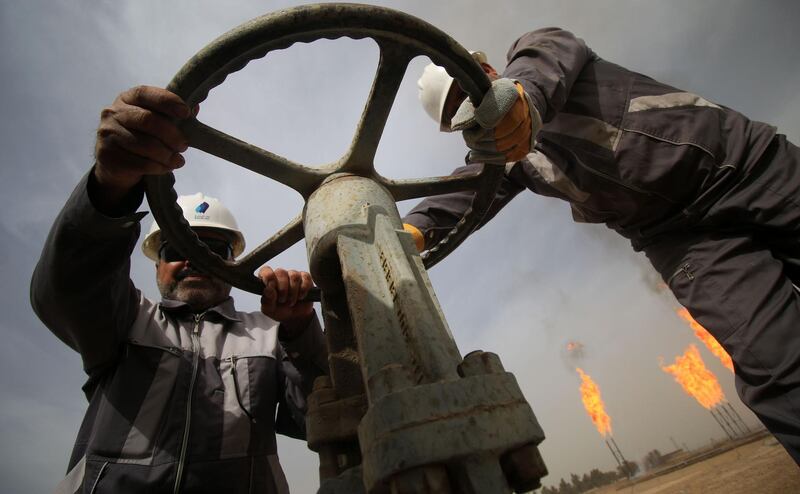Natural gas will overtake oil in the Middle East to become the dominant fuel, accounting for around 60 per cent of consumption by 2040, BP said in its annual energy outlook, underlining regional efforts to switch to the cleaner source to free up more crude for export.
The region will remain the largest producer of crude, and the second-largest producer of gas accounting for 34 per cent and 20 per cent of the world’s total over the next two decades, BP said in its outlook report.
The Middle East - one of the most energy-intensive regions in the world thanks to high demand for desalinated water and a heavily climate-controlled environment to cope with the region’s searing summer temperatures will see consumption increase by 54 per cent by 2040. However this growth will now be powered by cleaner natural gas, which oil exporters of the region such as Saudi Arabia have begun switching for fuel oil to generate power.
BP, which prepares the annual outlook to guide its policy making is seen as a bellwether of where Big Oil is heading in the future. The energy scenario in 2040 will be the most diversified ever, with renewables becoming the fastest growing source, accounting for 40 per cent of the increase in primary energy, according to the report.
The share of non-fossil fuels, notably wind and solar will increase in the Middle East in tandem with global trends, rising to 8 per cent by 2040 from one per cent at present. The share of solar and wind will be 20 per cent each within the renewables mix, with 15 per cent coming from developments in nuclear.
Oil-exporters in the region such as Saudi Arabia have warmed up to renewables, with non-fossil fuel based power projects being accelerated rapidly to meet looming targets over the next five years.
This year alone, the world’s biggest oil-exporting country is expected to tender around 3.25 Gigawatts-worth of solar capacity and 800MW of wind as it looks to develop around 9.5GW of renewables capacity by 2023.
_____________
Read more:
Middle East LNG demand forecast to dip as Egypt becomes self sufficient
_____________
The region is also expected to see commercial use of nuclear, with the expected coming on-stream of the first phase of the UAE's Barakah facility this year and Saudi Arabia’s plans to develop 16 reactors of 17.6GW capacity by 2032.
BP also forecast the production of conventional oil - the region’s mainstay - will decline to 29 million barrels per day by 2040 from approximately 31.7 million bpd last year.
The Middle East, which accounts for the largest reserves of natural gas, particularly offshore Iran and Qatar will see an expansion in the production of natural gas by 60 per cent by 2040.
This expansion will position the region as the largest exporter of LNG, however its share of the world’s total exports will decline from 35 per cent at present to a quarter by 2040. Pipeline exports are also set to increase to three billion cubic feet a day by the same timeline.







